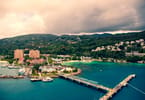SYDNEY – Qantas Airways Ltd. said Monday it will temporarily scrap first class travel on 42 of its weekly long-haul international flights from July, a move that could pre-empt a further round of capacity reductions by Asia-Pacific airlines, according to industry watchers.
The changes to around 7% of the weekly international flights operated by Qantas’ mainline brand, come as a sharp drop in global corporate traffic hits demand across premium cabin classes, and industrywide discounting continues to hurt profitability, according to Derek Sadubin of the Center for Asia Pacific Aviation in Sydney.
“Everyone’s looking at each other to see who will jump first,” said Sadubin, the chief operating officer of CAPA.
He said the move to reduce premium class seats was a cost-effective, but limited, method of trying to ensure Qantas load factors, a measure of how many paid seats it fills, remained buoyant. But it would further hurt profitability yields, he said.
“I think Qantas is sending a fairly strong signal and we expect Cathay, Singapore Airlines and others will be progressing with their plans to reduce capacity in this environment where yields are at extremely low levels and load factors are also weak,” said Sadubin.
In a statement Monday, Qantas executive manager of commercial services Rob Gurney said while demand for international economy class travel remains “relatively strong”, Qantas “like many other international airlines has experienced reduced demand in premium cabins,” due to the global economic downturn.
The airline will temporarily remove its first class offering from Boeing 747 aircraft on 14 weekly return routes, including four between Sydney and San Francisco, three between Sydney and Buenos Aires, and its daily services from Melbourne to London via Hong Kong, on flights between July 6 and October 31.
Gurney said Qantas will continue to either upgrade passengers or allocate them higher class seats without improved catering “to accommodate current market preferences and to ensure that load performance on Qantas international routes remains strong.”
In April, Qantas said it would cut capacity by around 5% and layoff up to 1,750 people as it forecast earnings to fall up to 93% in the fiscal year to June 30.
The airline also said price matching and heavy discounting had seen yields, a measure of profit per passenger, decline by 15% to 20% during the March quarter.
While many airlines globally have joined Qantas in cutting capacity, Sadubin said the next phase of cuts would need to be more drastic, with reductions of around 10%, and implemented before a seasonal decline in key northern hemisphere demand.
“If we’re still in this kind of no-man’s land economically over the next couple of months…they’ll have to sharpen knives for the late October schedule,” he said.
WHAT TO TAKE AWAY FROM THIS ARTICLE:
- In April, Qantas said it would cut capacity by around 5% and layoff up to 1,750 people as it forecast earnings to fall up to 93% in the fiscal year to June 30.
- He said the move to reduce premium class seats was a cost-effective, but limited, method of trying to ensure Qantas load factors, a measure of how many paid seats it fills, remained buoyant.
- While many airlines globally have joined Qantas in cutting capacity, Sadubin said the next phase of cuts would need to be more drastic, with reductions of around 10%, and implemented before a seasonal decline in key northern hemisphere demand.





















